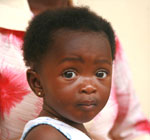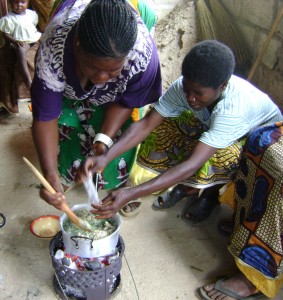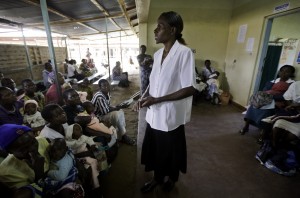
USAID's Infant & Young Child Nutrition Project
Strengthening health systems for healthier mothers and children
Strengthening health systems is essential for building a supportive environment for nutrition assessment, counseling, and support. A systematic approach is needed to help implement new guidelines and standards and to give community- and facility-based health providers a way to implement new approaches and provide improved services for mothers and children.
In the countries where we worked, health officials and providers needed assistance integrating nutrition into existing health care services and improving linkages between health facility- and community-based services in order to effectively reach caregivers with nutrition interventions.
We worked with partners and health workers to address the quality of nutrition services through quality improvement approaches and by initiating two-way referral systems between health facilities and communities.
By developing and sharing tools for monitoring nutrition programs, we improved program managers’ decision-making and the effectiveness of interventions. These efforts resulted in improved nutrition services and strengthened the overall delivery of health services—ensuring improved health care for mothers and children.
Improving nutrition services across the continuum of care in Zambia
 In Zambia and other countries, IYCN enhanced health service delivery by facilitating a seamless continuum of care from health facilities to communities. Community health workers and volunteers were the key to building links between critical health services and households that most needed them.
In Zambia and other countries, IYCN enhanced health service delivery by facilitating a seamless continuum of care from health facilities to communities. Community health workers and volunteers were the key to building links between critical health services and households that most needed them.
We trained Zambian community volunteers to assist overburdened health workers with tasks such as conducting nutritional assessments, home visits, and cooking demonstrations, and making appropriate referrals for services, while theater groups reinforced key messages through frequent community performances on infant and young child feeding.
Through strengthened two-way referral systems, volunteers referred mothers of children who were not growing well to community health centers and hospitals, which in turn, referred discharged children to community health volunteers for follow-up. As a result, more caregivers received consistent messages across the continuum of care, and referrals between health facilities and communities increased.
Highlights
- To address gaps in tools available to monitor global maternal, infant, and young child nutrition programs, we developed and widely disseminated several resources for program managers, including observation checklists, an exit interview guide, and a health talk checklist. IYCN’s Infant and Young Child Feeding Practices Monitoring Tool is now helping programs monitor progress in achieving key behaviors related to infant and young child feeding.
- In Rwanda, we assisted the Ministry of Health in creating a new national monitoring and evaluation plan for its Multi-Sectoral Strategy to Eliminate Malnutrition. The plan will help the government track progress toward its goal of reducing all forms of malnutrition among mothers, children, and people living with HIV by 30 percent by 2013.
- We strengthened nutrition assessment, counseling, and support services in programs for prevention of mother-to-child transmission of HIV and orphans and vulnerable children by initiating sustainable quality improvement interventions in Côte d’Ivoire, Ethiopia, Nigeria, and Zambia. In Nigeria, for instance, a quality improvement team in the Federal Capital Territory is continuing to implement system-wide interventions to address factors hindering the quality of nutrition services, including weak governance and lack of health worker counseling skills.
- To ensure the quality of services provided in health facilities and communities, we designed sustainable supervision systems and facilitated supportive supervision of trained health workers in six countries. The project supported more than 300 supervision visits of trained health workers in Zambia and conducted 268 supervision visits of trained health workers in Côte d’Ivoire.
Photo: PATH/Evelyn Hockstein, Tina Kaonga


